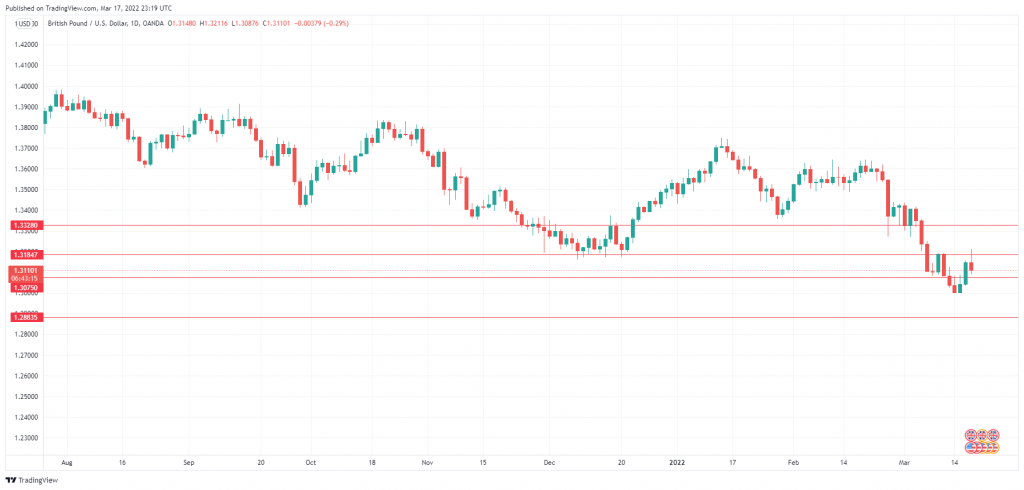GBP/USD is down 0.28% on Thursday, trading just above the 1.31 line in the North American session.
BOE Raises Rates But Sterling Falters
The Bank of England raised rates by 0.25%, as was widely expected. This was an unprecedented third straight hike from the BoE, but the new record failed to impress investors, as the pound rose steadily prior to the hike, only to fall by 0.8% after the rate move.
Why the sour grapes from the markets after a rate hike? Investors were likely looking for more from the central bank, such as a 50-basis point hike, or at least more support for such a move. The fact that only one MPC member voted for a 50-basis point (the other eight voted for the 0.25% hike) has left the markets under the impression that the BoE is not hawkish enough in the face of soaring inflation. The Bank’s policy monetary summary noted that inflation is expected to hit 6% in February and March and peak at 7.25% in April.
Clearly, there is a long way to go before inflation falls to the Bank’s target of 2% and the markets are looking for an aggressive response from the BoE. With the war in Ukraine and surging oil prices, however, BoE policymakers may opt to raise rates to a lesser extent than the markets would like to see.
As expected, the Federal Reserve raised rates by 0.25%, the first hike since December 2018. The FOMC dot plot, projected another six rate hikes this year and forecasted that rates would rise to 2.8% by the end of 2023, sharply higher than the 1.60% estimate in December. The rate statement said that a tapering of the balance sheet would start at a “coming meeting”, but Chair Jerome Powell removed some of the uncertainty at his press conference, hinting at a reduction in May. This double-tightening is a clear indication that the Fed plans to be aggressive in its monetary policy, with the aim of wrestling red-hot inflation back to the Fed target range of 2%-3%.
GBP/USD Technical
- 1.3075 is a monthly support line. Below, there is support at 1.2962
- There is resistance at 1.3184 and 1.3328


